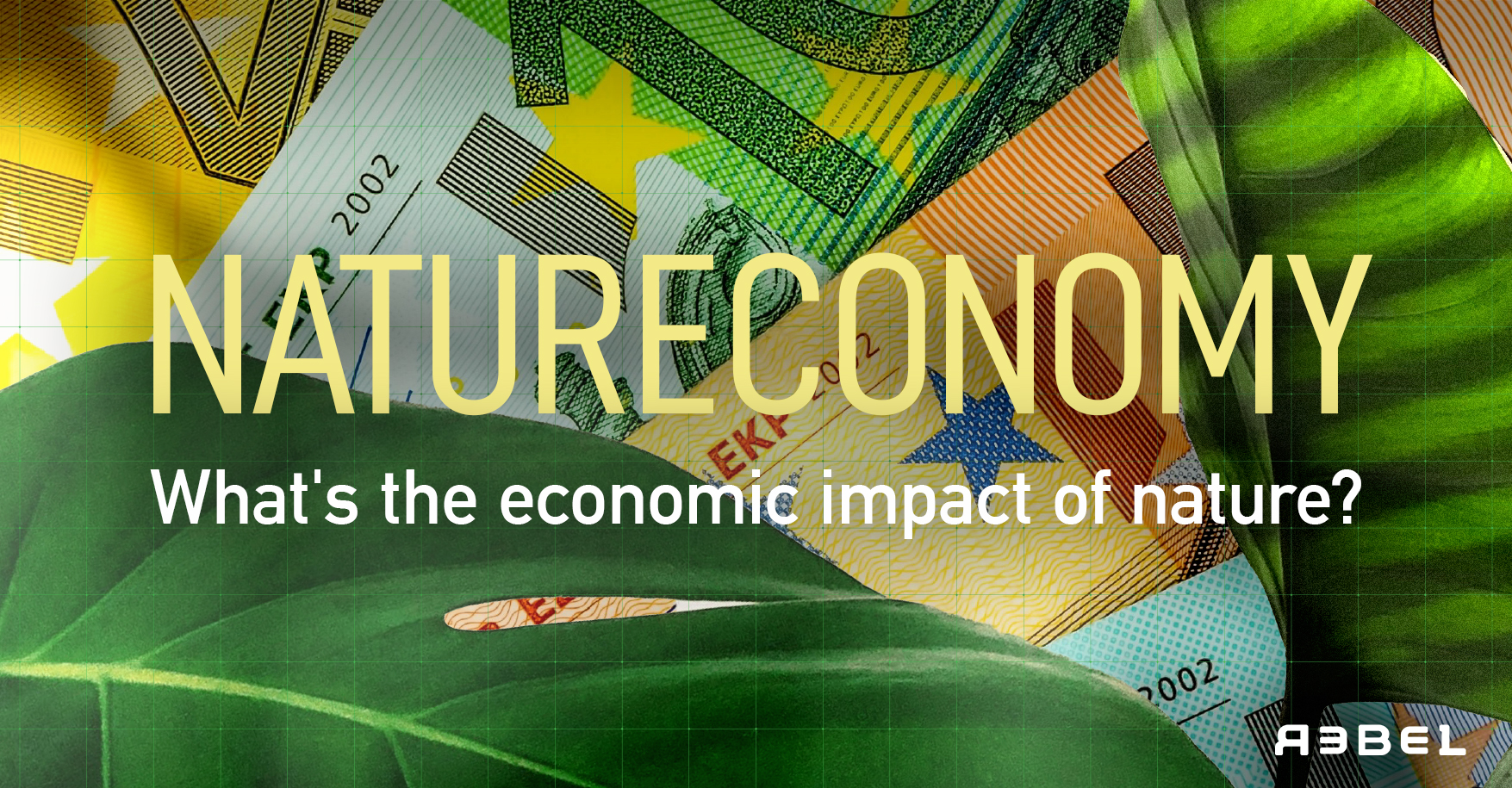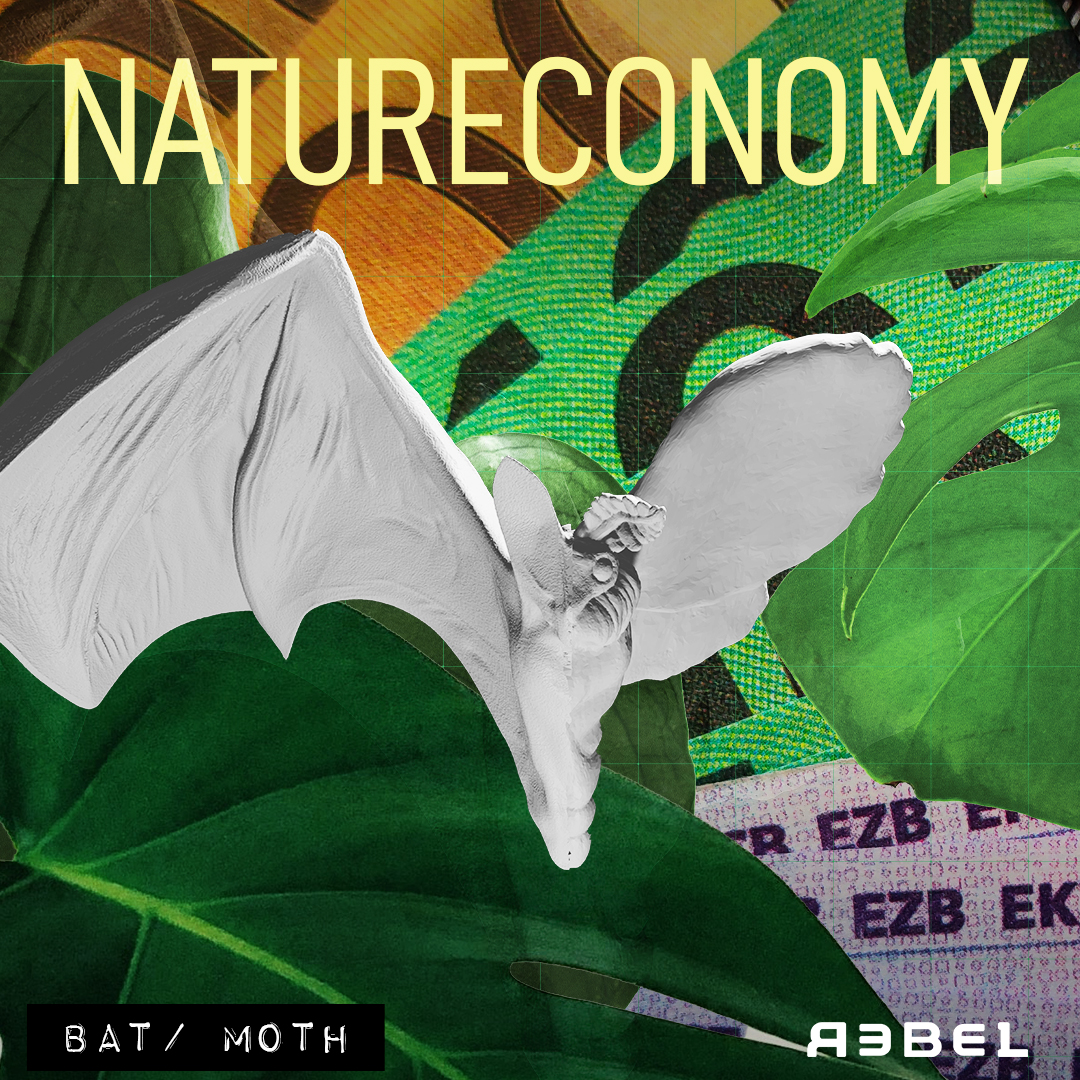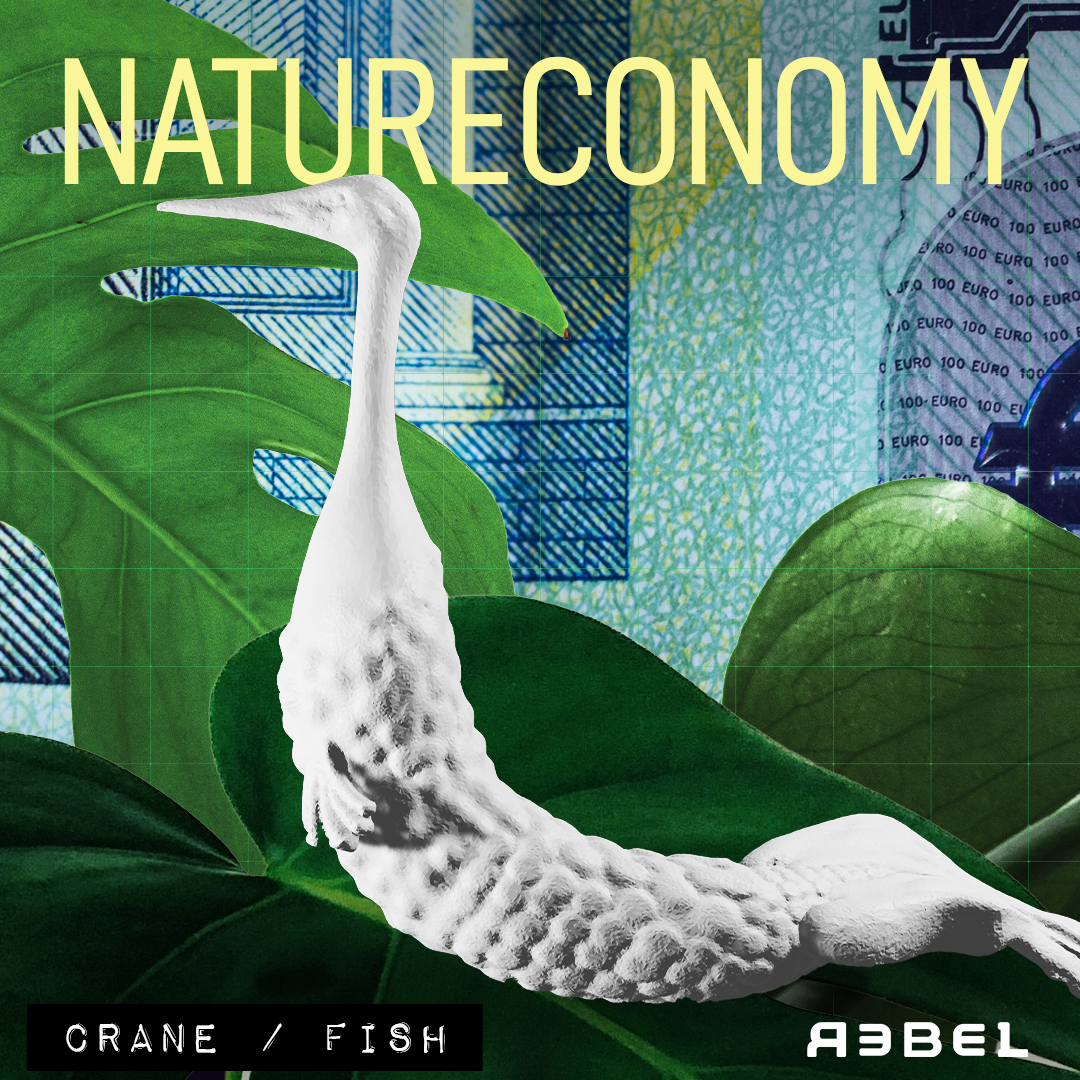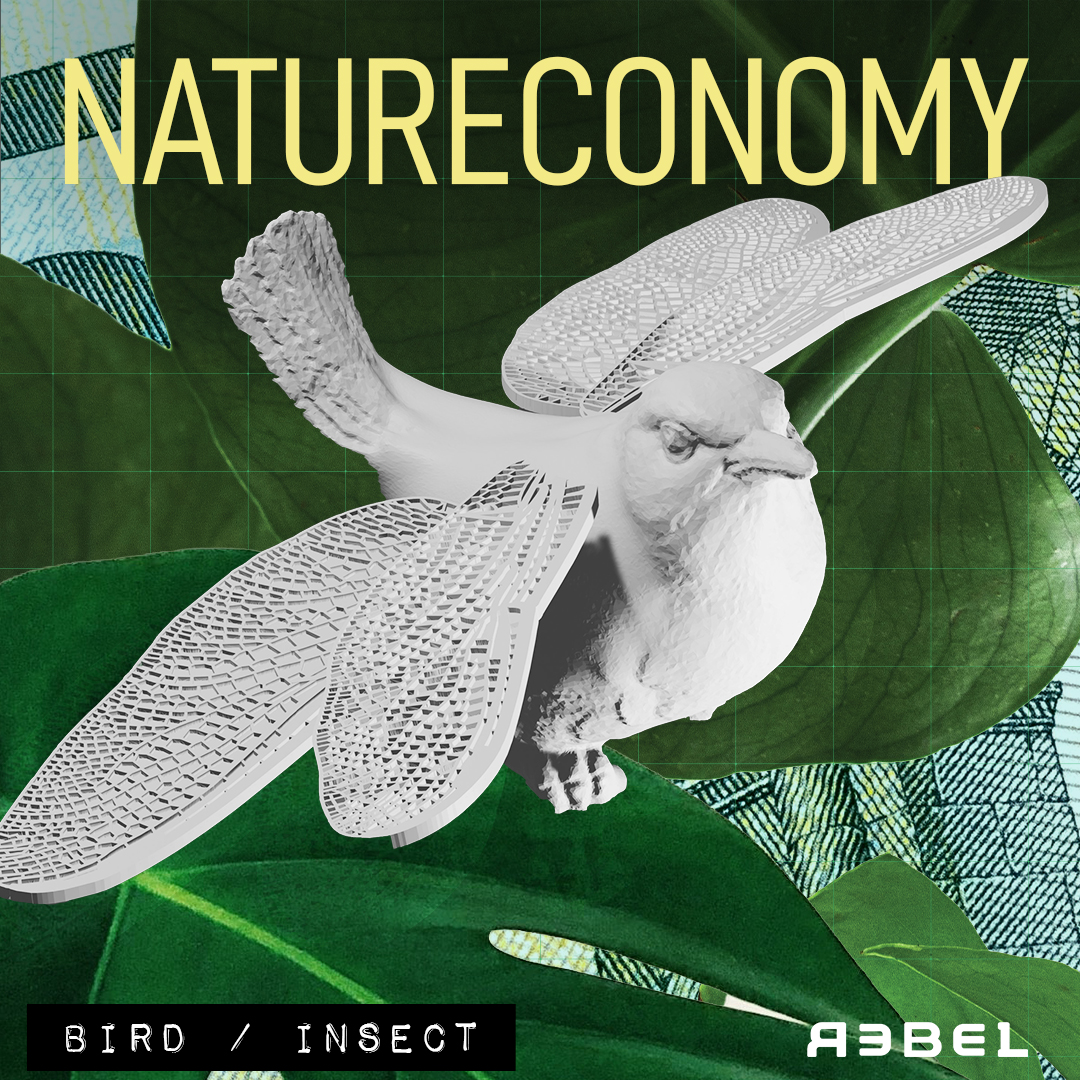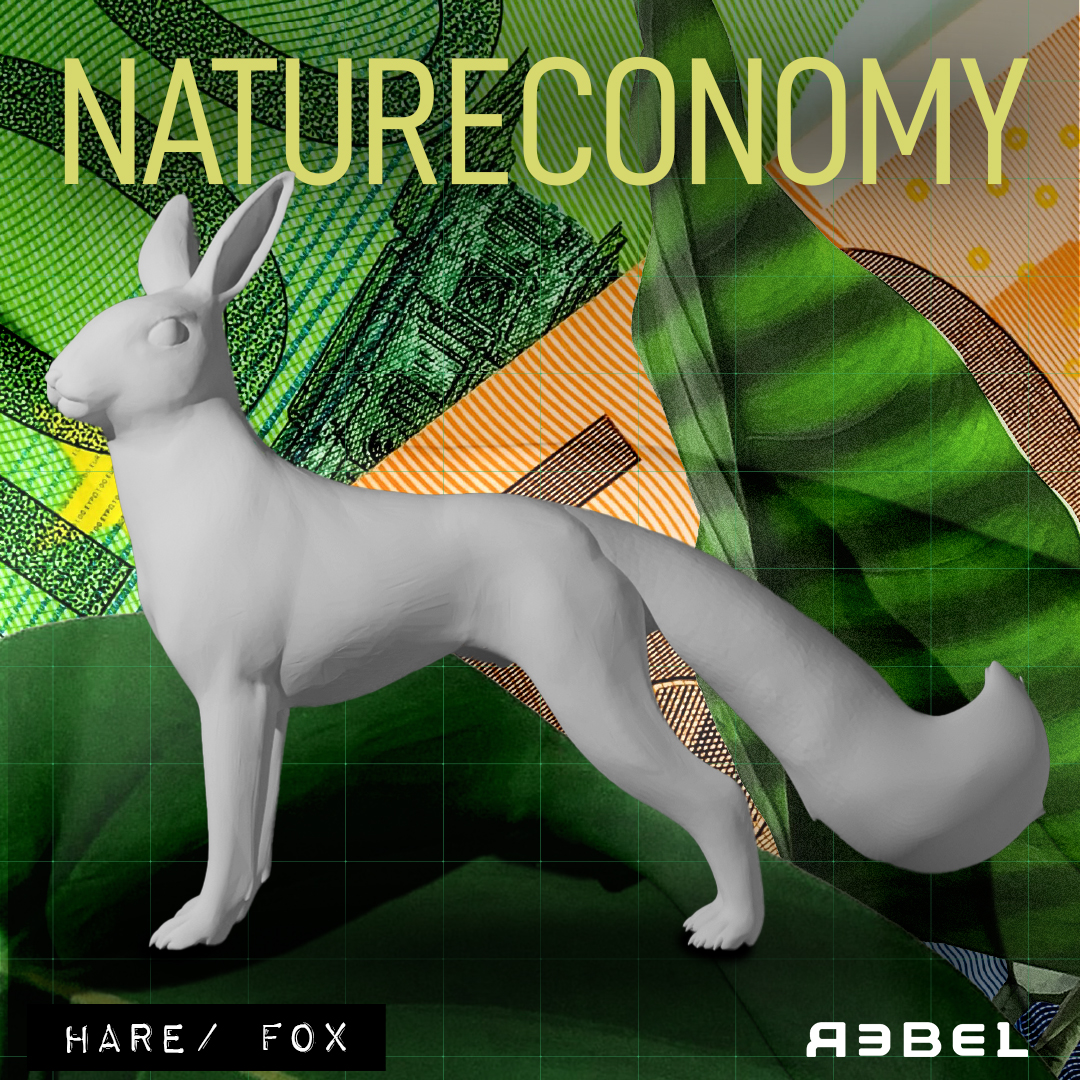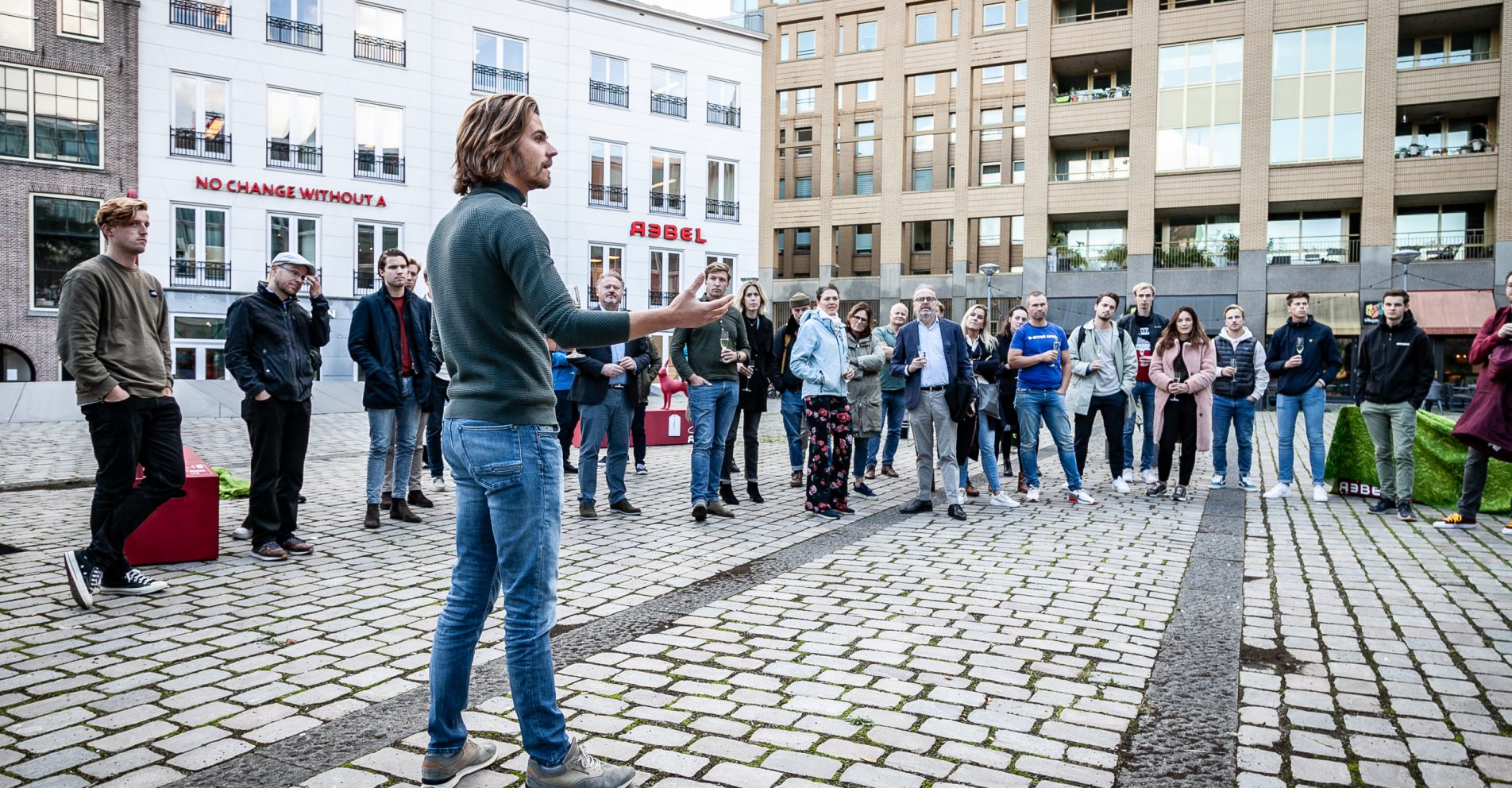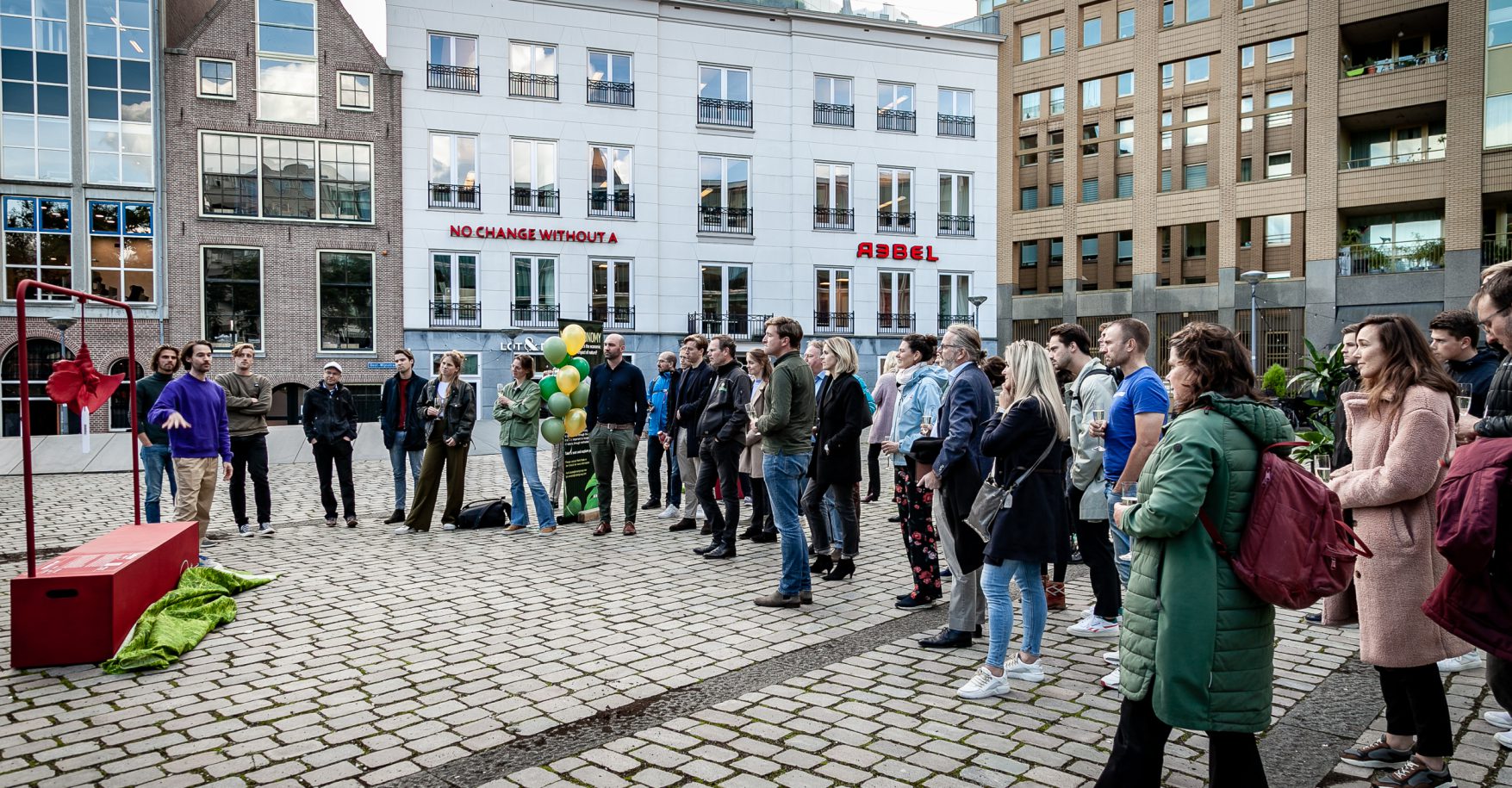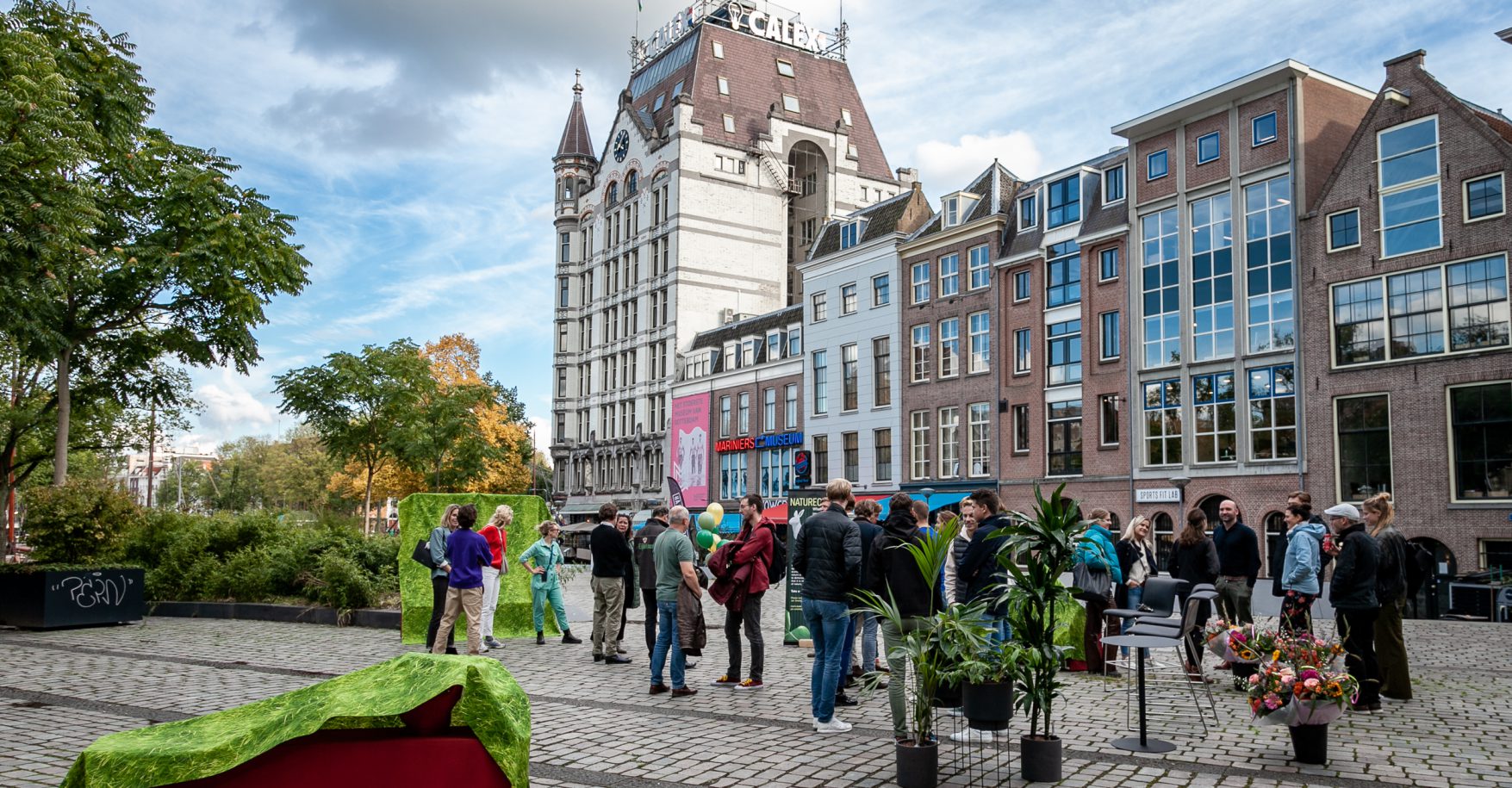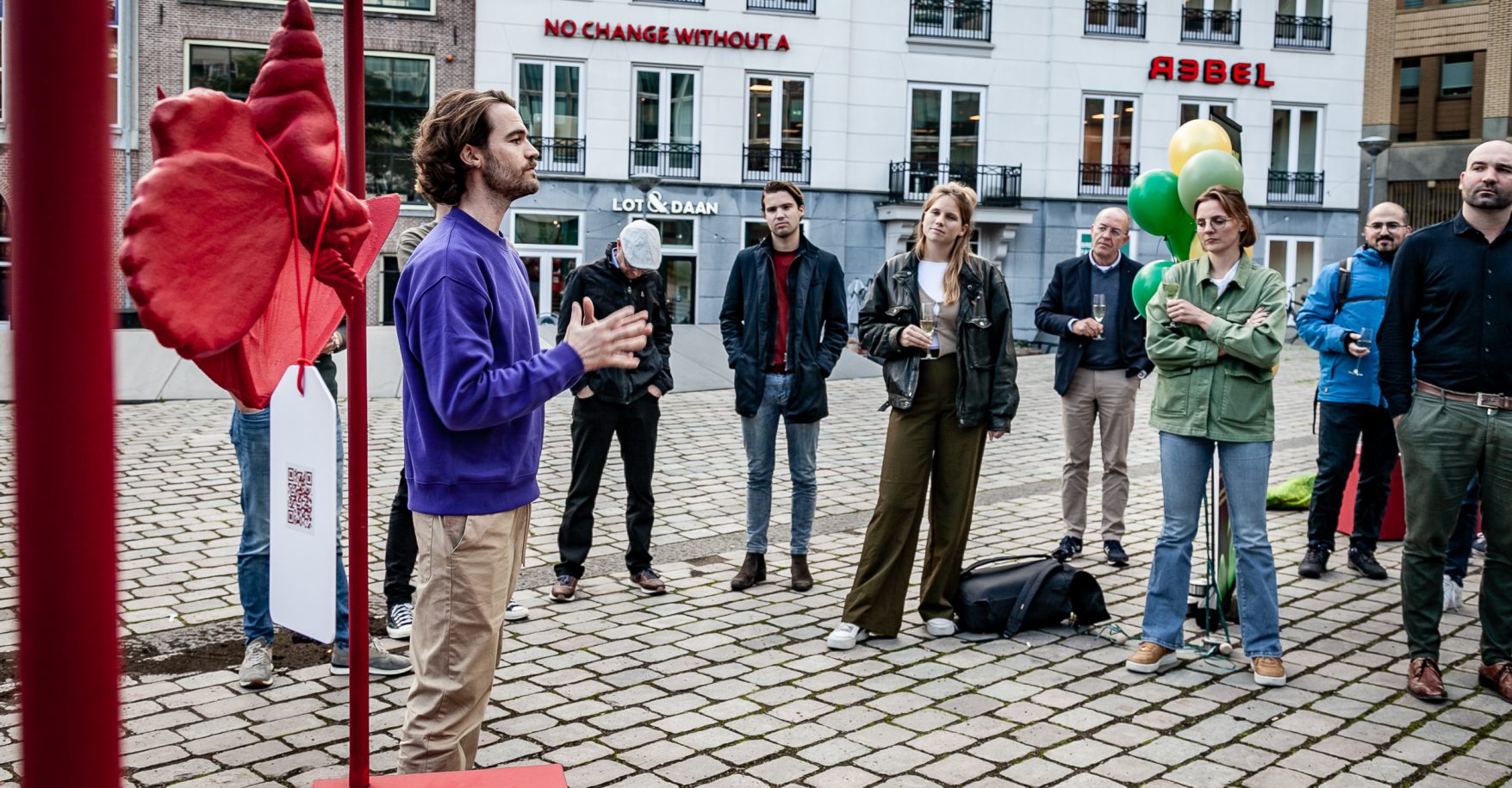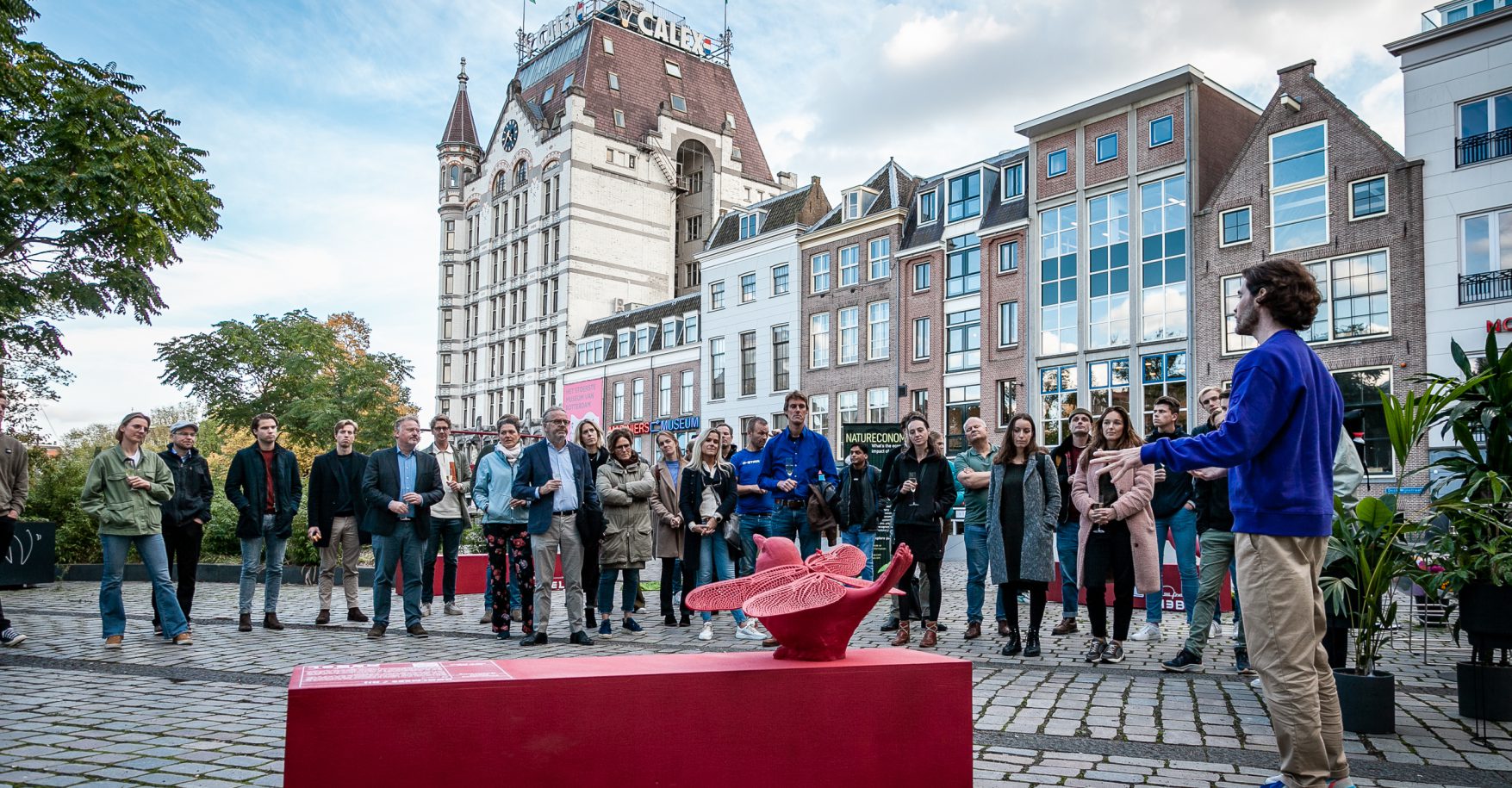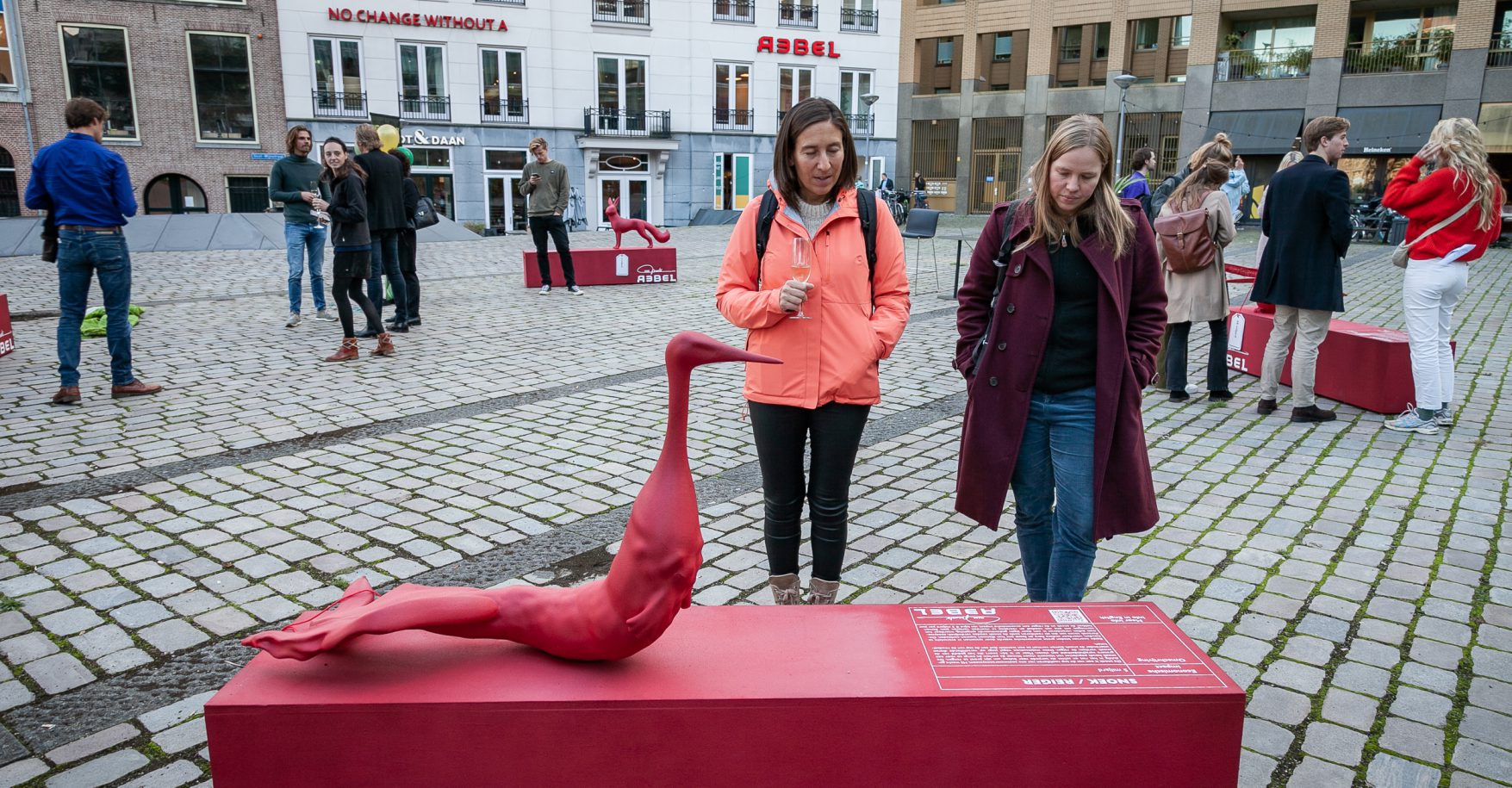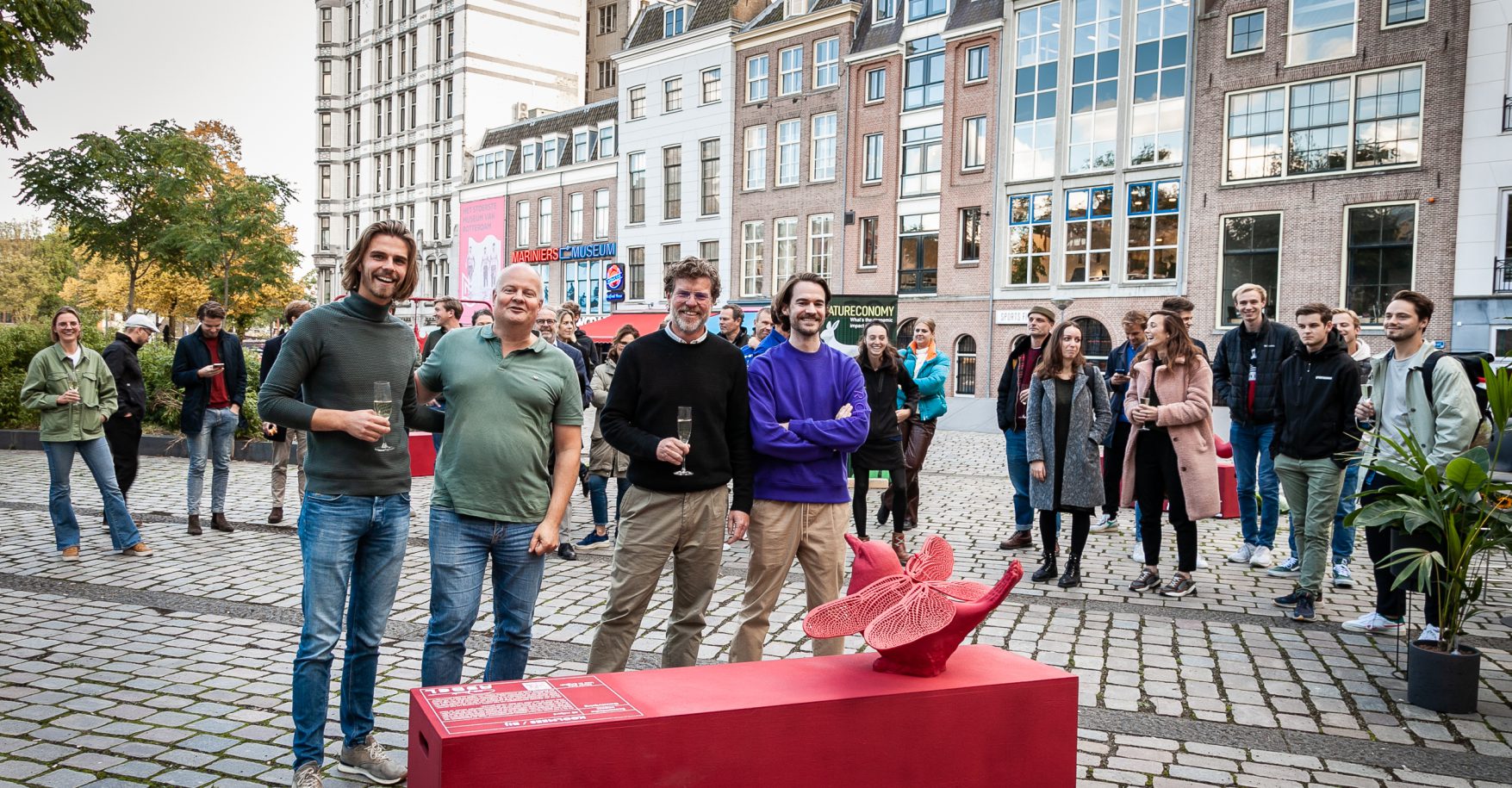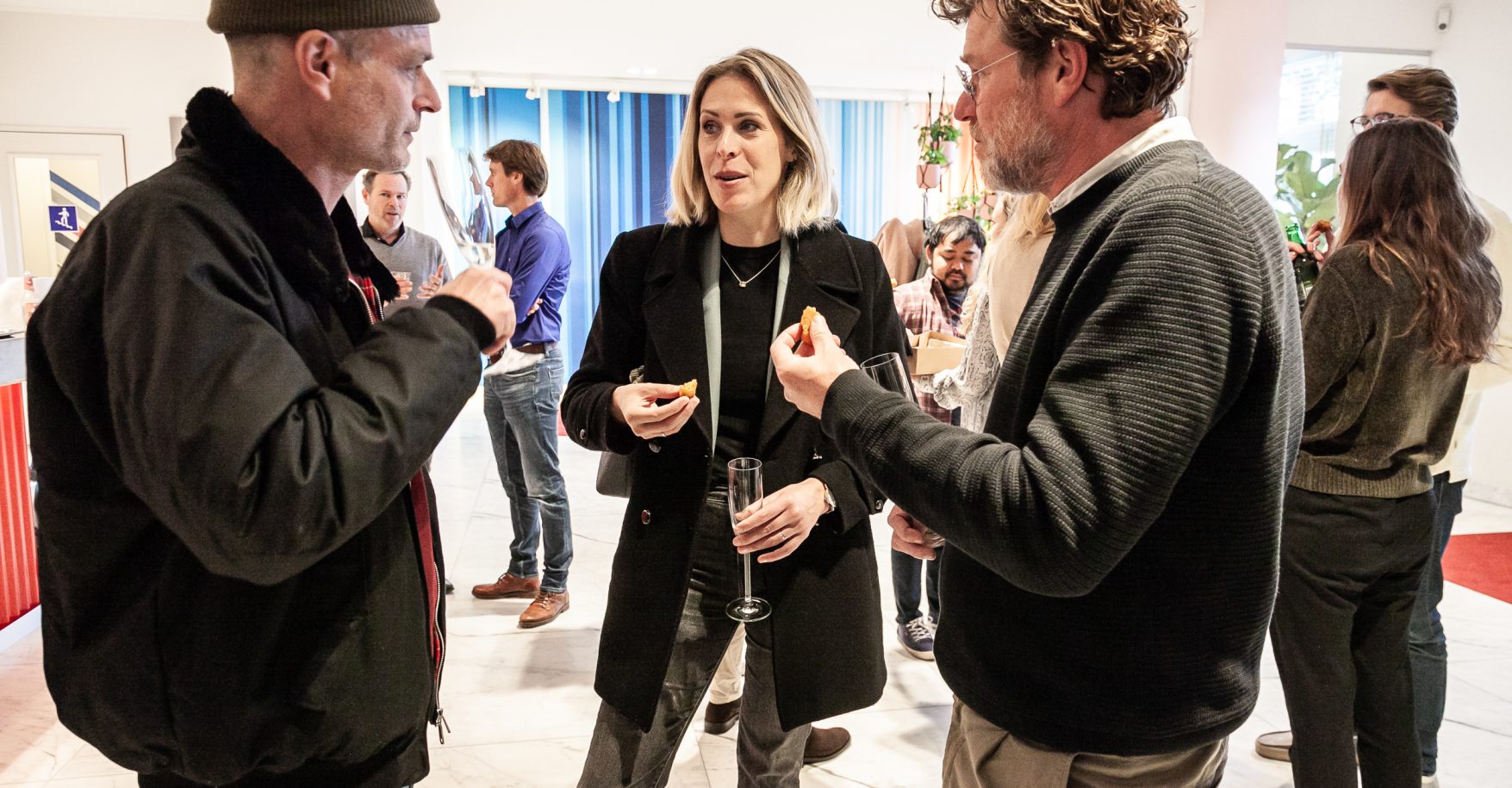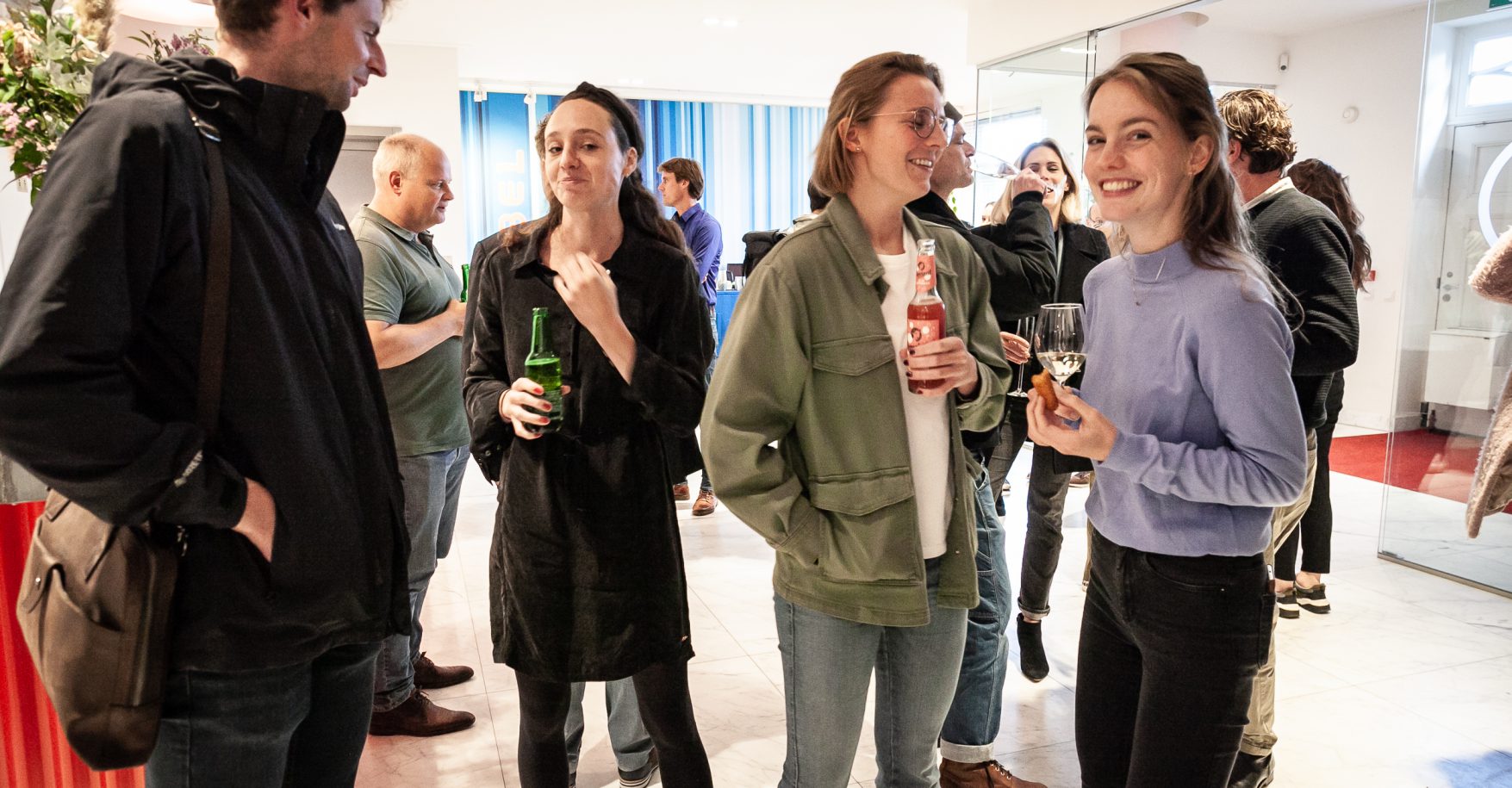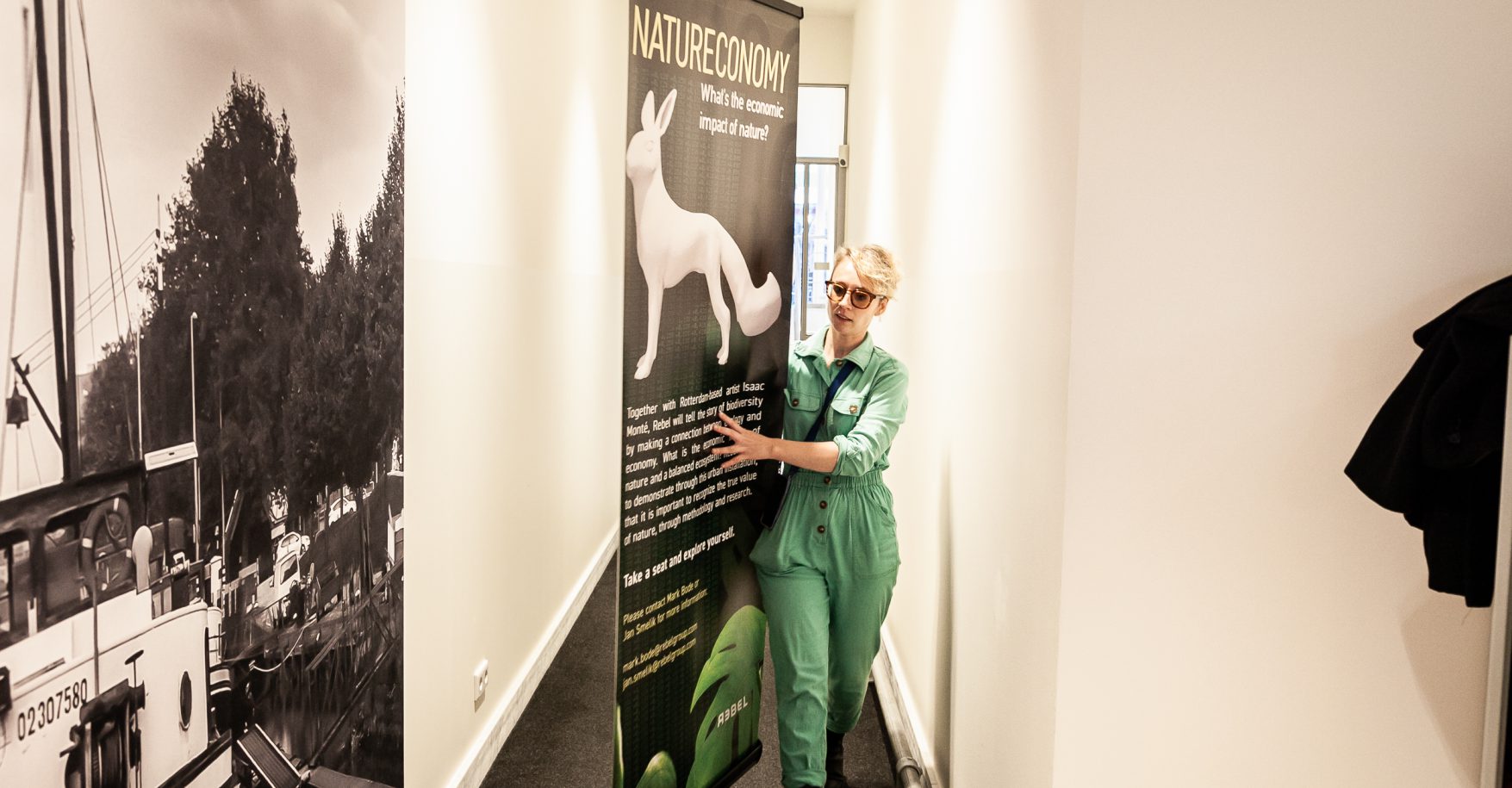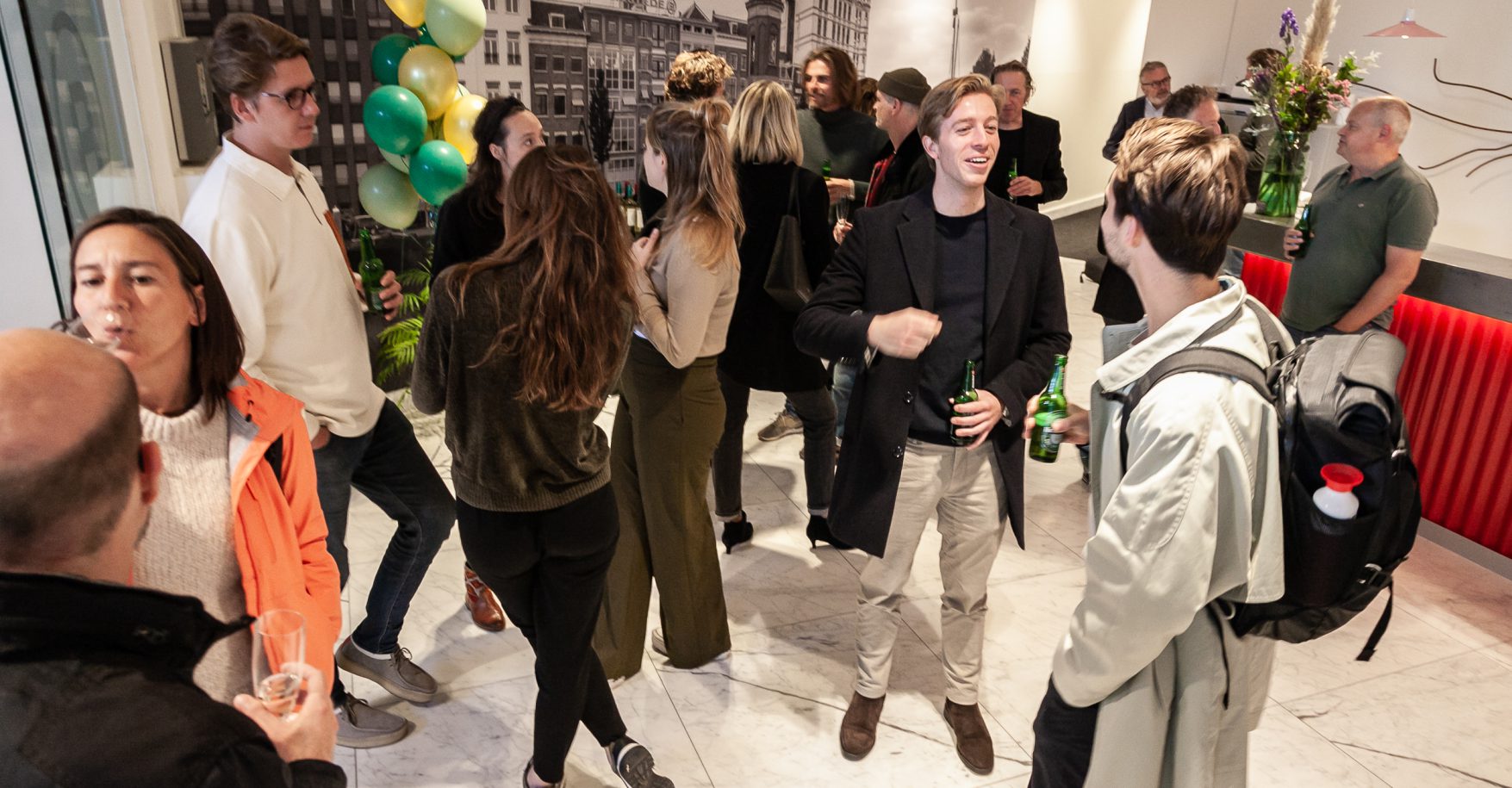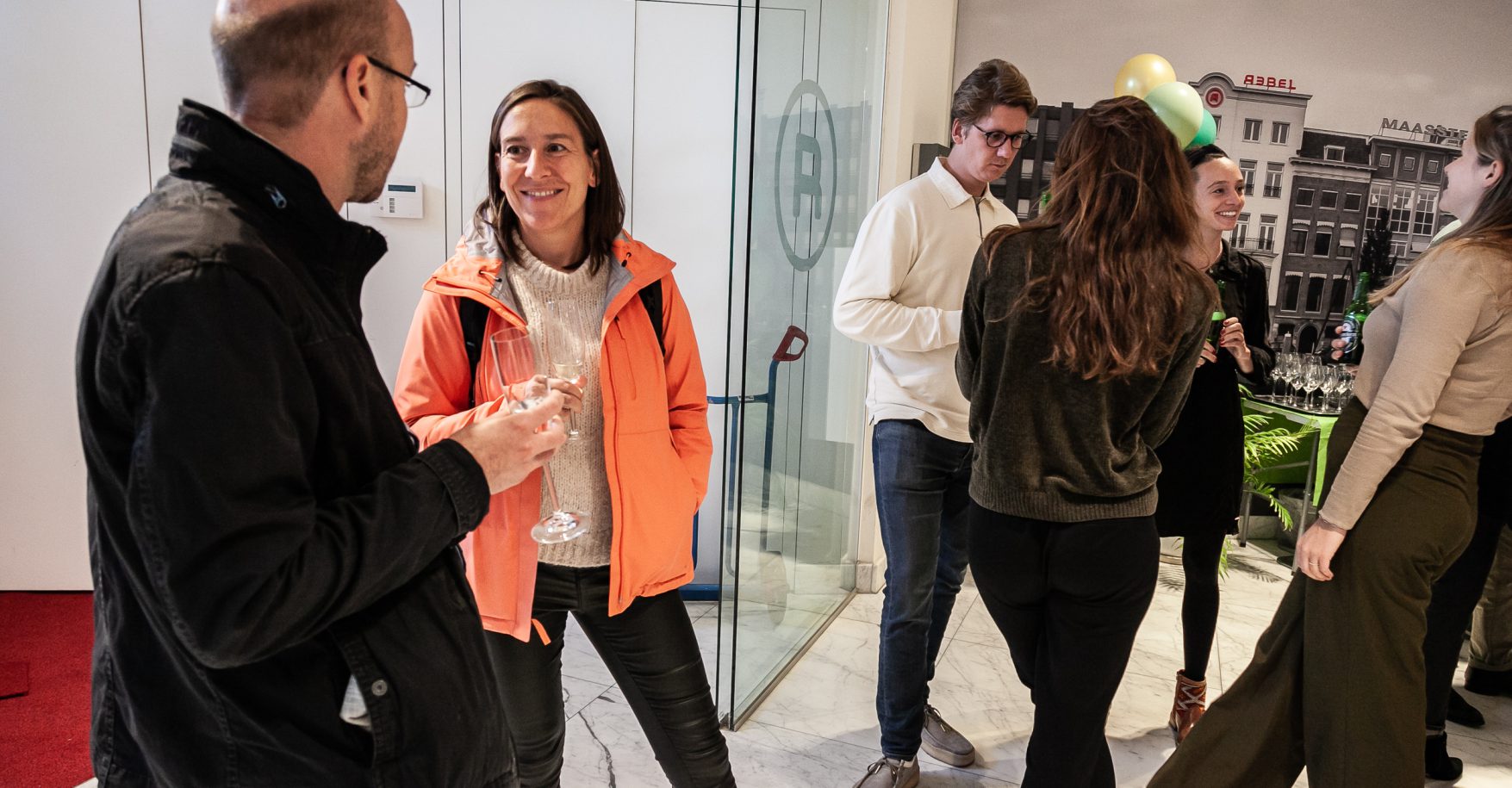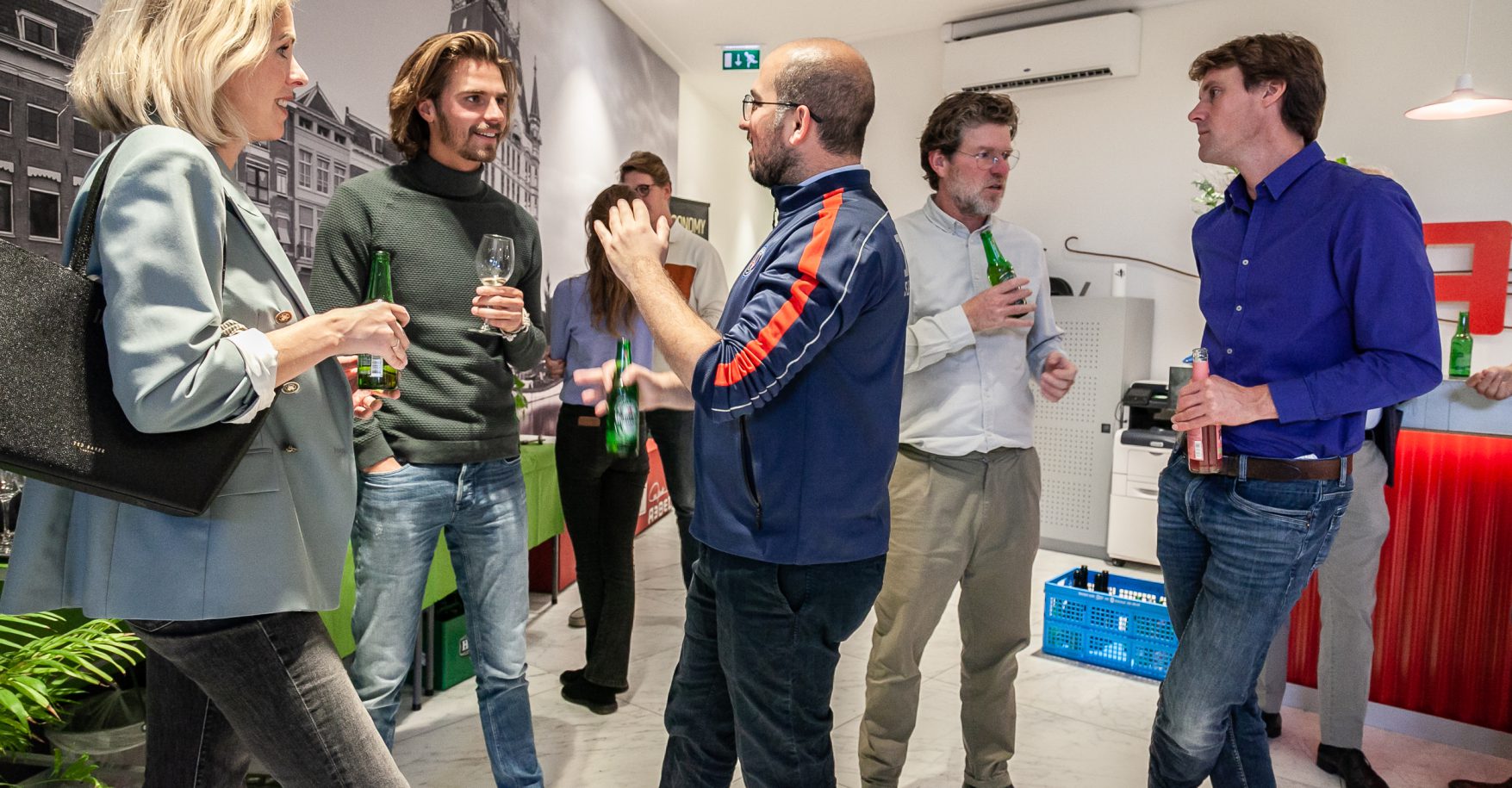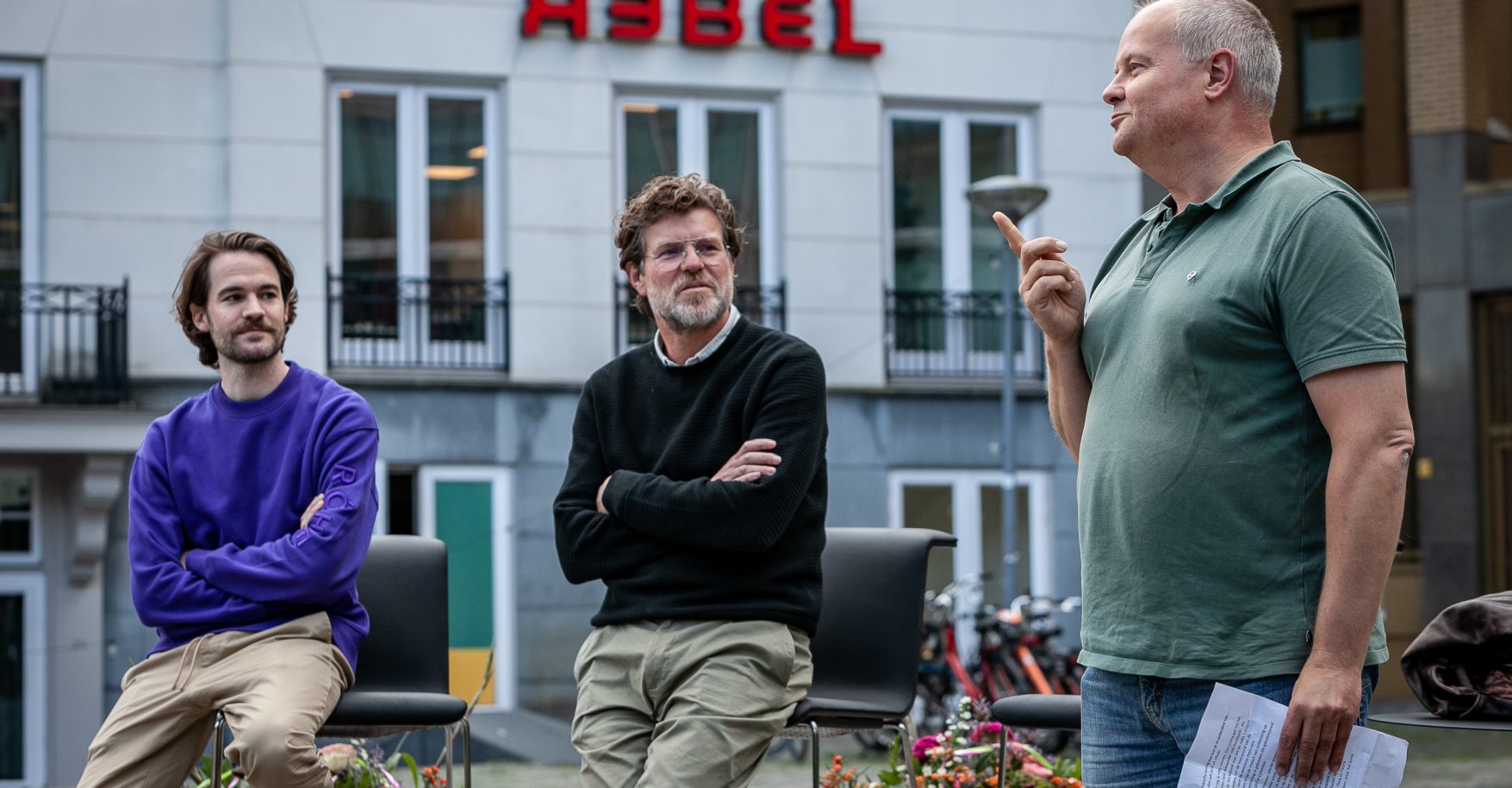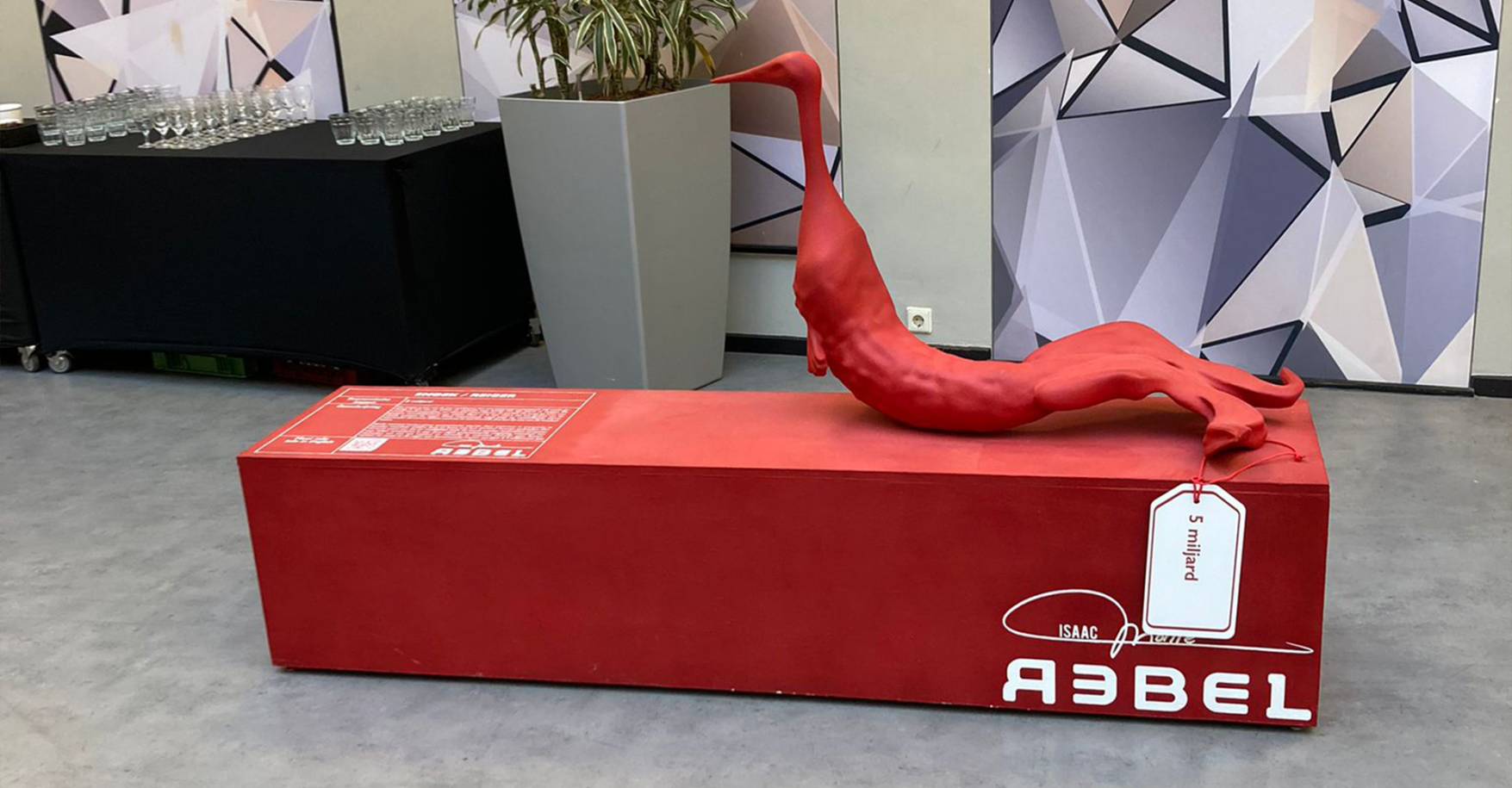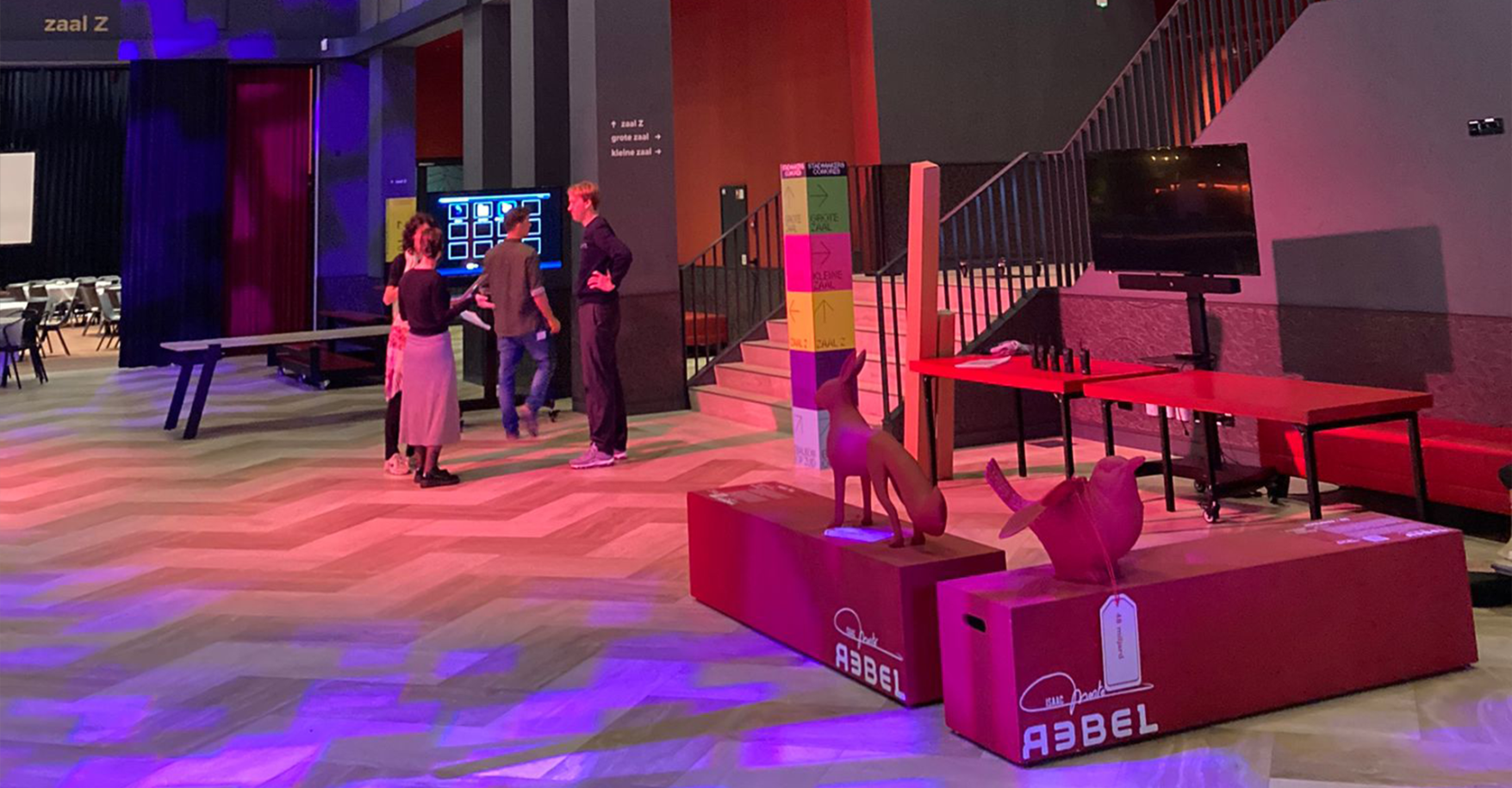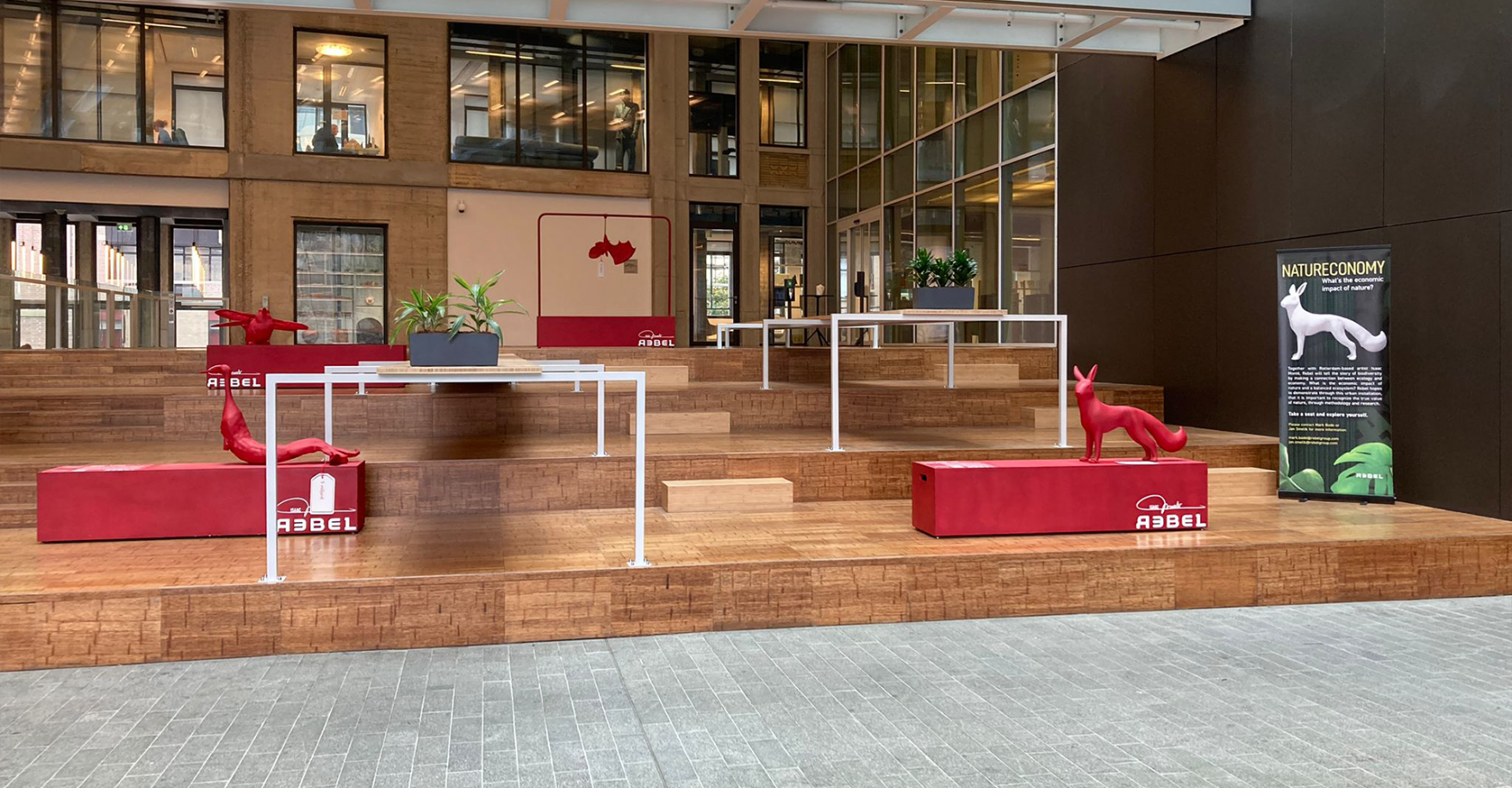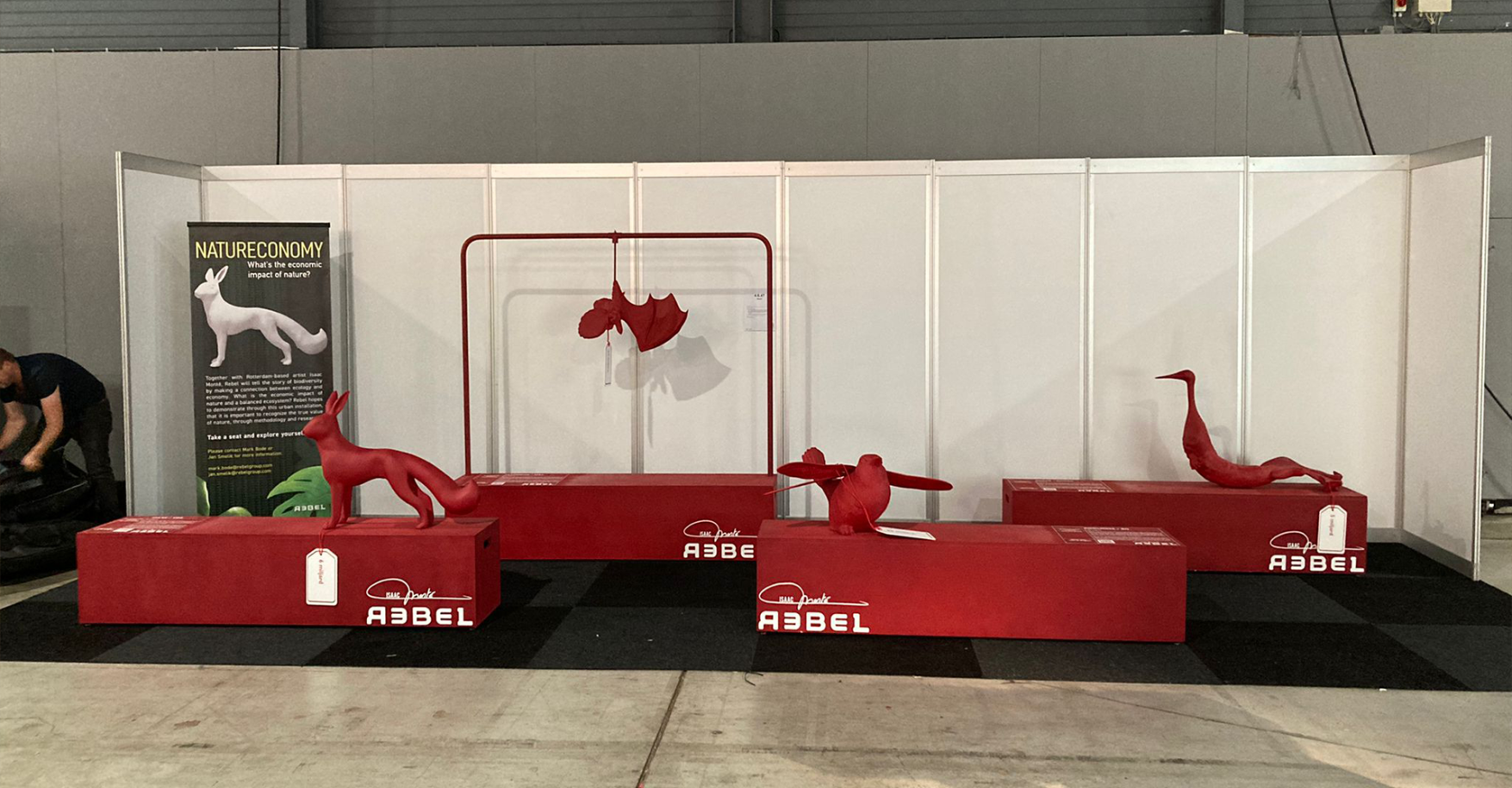ABOUT NATURECONOMY
Together with Rotterdam-based artist Isaac Monté, Rebel will tell the story of biodiversity by making a connection between ecology and economy. What is the value of nature and a balanced ecosystem?
The urban installation Natureconomy includes four hybrid animals which are a combination of hunter and prey, to demonstrate they need each other for a balanced ecosystem. The animals chosen are important for Dutch nature – inspired by the 10 of 010 programme of the Municipality of Rotterdam. All are iconic species like the fox, the heron, the great tit, the bat and other insects like the bee.
In Isaac Monté’s interpretation, the hare is combined with the fox; the bat with the moth; the pike with the heron and the great tit with the bee, to illustrate that each of the species is essential within the ecosystem. To make their value tangible, Rebel added economic impact tags including their minimal value of the animals, based on available research. In this light, these species are essential and luxury goods at the same time, although they are not always considered this way.
SOCIAL VALUE vs ECONOMIC VALUE
In addition to social value, animals also offer economic value. Without bats, bees and moths our crops would not be pollinated. Caterpillars produce silk, fish can be eaten and our children own rabbits as pets. To reinforce that message and to give insight into what the world’s fauna offers us without us realizing it, we have tried to calculate the economic value. Although we feel that flora and fauna are valuable, practice shows that our behaviour is not always in line with our feelings.
A depiction of the financial value is interesting, but not so much because we want to see animals as economic objects, but because it illustrates that without fauna there is no healthy economy imaginable.
The value of nature is not insignificant: Nature offers us at least $33 trillion a year. The U.S. economy is stuck at $23 trillion. We advocate, and are committed to, including the real value of nature in economic and policy decisions. Many incredible initiatives appeal to people’s emotions, but we strive to contribute by focusing on the perspective of the wallet. But that is not an easy task. How do you express the monetary value of a coal tit eating a nest of caterpillars in front of your house? Or a bat eating an average of 300 mosquitoes a night. Nevertheless, we made the attempt. Although sometimes assumptions were needed to be made, and more importantly, a lot of benefits are still to be calculated.
THE ECOSYSTEM AS A WHOLE
In the end, it always comes down to the fact that every animal species plays an essential role in the ecosystem. Do you fish all the pike? Then the heron will have no food left, and there will not be much left in the pike ecosystem other than a mass of algae. Only a healthy ecosystem, with room for all animals, can show the full value of each animal. But what happens when you remove one link, causing the ecosystem to be out of balance? Problems arise, such as structural pests and diseases. Species such as the rat and mouse have lost their natural enemy and have changed from timid animals to aggressive pests. Just in America alone, these types of pests cause $138 billion in damage each year. Every animal deserves its space: The bat, the rat, the bee and the fox. These animals will offer us so much more as long as we give them that space.
Please note:
- Below we offer no more than some indicative insights into the values of individual animals, the real value lies in the ecosystem as a whole.
- The numbers we mention are just the tip of the iceberg.
- The urban installation Natureconomy is moving around the Netherlands. The animals will travel from Rebel HQ (Gelderseplein) to Vakbeurs Openbare Ruimte (5 and 6 Oct in Jaarbeurs Utrecht) back to Rotterdam. At these locations, you can admire the animals and discuss with Rebels and others the value of nature.
- Check the live location below to see where the animals currently are.
ABOUT ISAAC MONTÉ
Fascinated by societal sustainability Isaac Monté is interested in unusual, new materials and how you can manipulate those. He sees himself as a pioneer who, by means of combining technology, art and science, shows how art can contribute to a strategy of sustainable development. His work has been shown in a variety of museums, galleries and exhibitions in Belgium, France, The Netherlands, Italy, USA, Austria, Hungary, United Arabian Emirates, China, United Kingdom, Ireland and Germany.
He used the following materials for Natureconomy:
- Benches: they are made out of reclaimed wood by Buurman Rotterdam. This wood was used during COVID. to make outdoor terraces for the bars and restaurants in Rotterdam. At that time no guests were allowed inside, so parking spots were transformed into terraces, using wood.
- Coating: we used a primer coating from a Rotterdam Woningbouwcorporatie. The primer was expired, so it could not be used anymore for this client, but the primer was still perfect and functional to use for the benches.
- Hybrid animals: they are 3D printed, using recycled PET (RPET). PET is the material we know from plastic bottles. Both the animals and the benches are coated in art stone, which is a mineral powder, mixed with a water-based resin.
PHOTOS OF THE LAUNCH
Photos by: Leo Veger
Click on the arrows on either side of the photo below to scroll through the selection of photos.
NATURECONOMY LOCATIONS
Click on the arrows on either side of the photo below to scroll through the selection of photos.
More information?
As part of the #Natureconomy conversation, our Rebels Mark Bode, Jan Smelik and Jan-Coen Van Elburg spoke with Derk Loorbach: director of DRIFT, a socio-economic transitions professor and a founder of the transition management approach for sustainable development.
Download the full text (inclusing sources) here:
